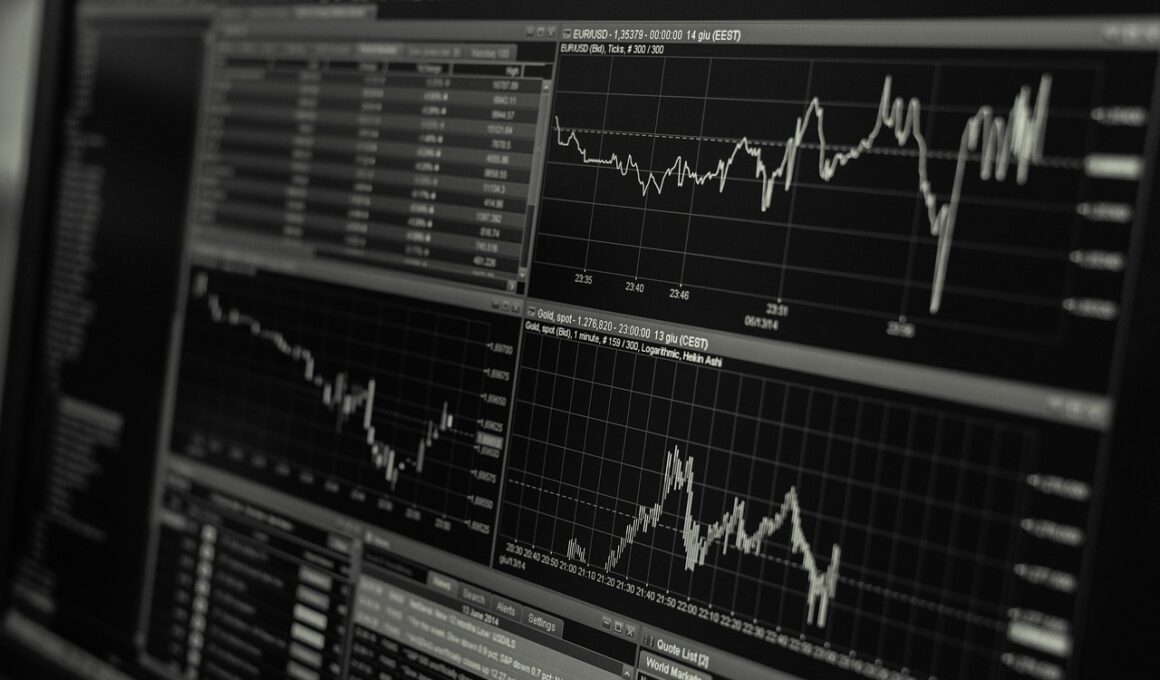An Introduction to Algorithmic Trading: Basics and Benefits
Algorithmic trading has transformed the landscape of financial markets, enabling traders to execute orders using programs and algorithms. This method relies on predefined rules, removing human emotion and bias that often hinder trading decisions. By utilizing mathematical models and historical data analysis, algorithmic trading can optimize the timing and size of trades to capitalize on market opportunities. Investors often employ this strategy to enhance their trading efficiency and profitability. Furthermore, it allows for high-frequency trading, where thousands of trades can occur in seconds. The choice of algorithms usually hinges on market volatility, liquidity, and trading volume, which varies widely across different asset classes. The rise of technology has facilitated algorithmic trading by reducing transaction costs, improving execution speed, and increasing access to real-time market data. Platforms that support algorithmic trading have become essential tools for professional investors. Institutions, hedge funds, and even individual investors are increasingly adopting these systems to gain an edge in competitive markets. As technology continues to evolve, so will the strategies and tools available for algorithmic trading.
One of the primary benefits of algorithmic trading is its ability to analyze vast amounts of data at remarkable speeds. With immense datasets available, algorithms can identify patterns and make predictions better than most human traders. This capability often leads to more informed trading decisions and improved performance over time. Algorithms can also backtest trading strategies against historical data, allowing traders to optimize their systems before deploying real capital. Additionally, the automation of trades means that orders can be executed instantly when predefined conditions are met. This reduces the risk of missing out on profitable opportunities associated with human delays in decision-making. Moreover, algorithmic trading can facilitate diversification across various asset classes, sectors, or geographic regions, thereby managing risk more effectively. By spreading investments, traders can hedge against market fluctuations while maximizing potential returns. Another significant advantage is the reduction of emotional trading, where traders can often deviate from their strategies due to anxiety or greed. Algorithms operate solely based on data, which eliminates these psychological barriers. Overall, algorithmic trading represents a compelling evolution in the trading landscape.
Types of Algorithmic Trading Strategies
Numerous algorithmic trading strategies exist, each tailored to specific market conditions and trader objectives. These strategies typically fall into a few categories, including trend-following, arbitrage, market-making, and statistical arbitrage. Trend-following strategies leverage historical price movements, seeking to capitalize on existing market trends. This method is often employed in rising or falling markets to maximize profits while minimizing risks. On the other hand, arbitrage involves exploiting price discrepancies between assets in different markets, allowing traders to profit from inefficiencies. Market-making strategies focus on providing liquidity by placing simultaneous buy and sell orders, benefiting from the bid-ask spread. These strategies are essential for maintaining market stability and facilitating smoother transactions. Lastly, statistical arbitrage utilizes quantitative analysis to identify mispriced securities, employing complex mathematical models to find and act on inefficiencies. Each strategy has its advantages and risks, depending on various factors such as market conditions and volatility. Traders often combine multiple strategies to tailor their approach and enhance performance, adapting to the ever-changing dynamics of the financial markets.
While algorithmic trading presents significant opportunities, it also carries inherent risks that traders must carefully consider. Technical failures, including downtime and bugs in the code, can lead to severe financial losses. A malfunctioning algorithm can execute trades inappropriately or trigger cascading market effects, creating unfavorable conditions. Additionally, algorithms rely heavily on historical data, which may not always predict future market behavior accurately. Market shocks caused by unforeseen events can lead to unpredictable outcomes that algorithms may not account for, potentially resulting in significant losses. To mitigate these risks, traders should implement robust testing procedures, continuously monitor algorithm performance, and adjust parameters as necessary. Another challenge arises from market competition and saturation, as more traders employ similar strategies. This environment often diminishes the effectiveness of a particular approach, meaning that traders must innovate and adapt consistently. Moreover, regulatory scrutiny on high-frequency and algorithmic trading continues to increase, requiring traders to stay informed about compliance and operational guidelines. By understanding these risks and challenges, traders can better prepare for the complexities involved in algorithmic trading.
Choosing the Right Algorithmic Trading Platform
Selecting an appropriate algorithmic trading platform is crucial to success in this field. With numerous options available, traders must evaluate various factors, including accessibility, cost, features, and user experience. Platforms should offer diverse algorithm implementation options, encompassing simple strategies to complex trading systems. User-friendly interfaces make it easier for traders to create and modify their algorithms. Furthermore, the platform’s execution speed is essential for capitalizing on market opportunities in real time; any delay could result in missed trades. Cost structures also vary considerably, with some platforms imposing transaction fees or subscription costs. Traders must identify a balance between affordability and the features that align with their strategies. Another essential consideration is access to essential market data and analytics tools, as these will underpin the algorithms’ effectiveness. Some platforms provide integrated backtesting features, enabling traders to refine their strategies before implementation. Additionally, traders should prioritize customer support and educational resources to assist in navigating issues as they arise. By thoroughly researching and comparing options, traders can select a platform that best suits their unique trading needs.
The future of algorithmic trading looks promising, with technological advancements poised to create more sophisticated trading algorithms. Emerging technologies such as artificial intelligence (AI) and machine learning (ML) will significantly impact the development of more adaptive and responsive trading systems. These technologies will allow algorithms to learn from market data continuously and improve their decision-making abilities over time. Moreover, quantum computing’s potential could revolutionize data processing speeds, enabling more complex analyses and richer datasets for algorithmic trading. As markets become increasingly interconnected, multi-asset strategies will likely gain traction, allowing traders to optimize their portfolios across various assets dynamically. Collaboration between humans and machines is expected to increase further, with traders leveraging technological tools while maintaining ultimate decision-making authority. However, ethical concerns surrounding algorithmic trading will also need addressing, including the implications of high-frequency trading on market fairness and stability. As more participants enter the algorithmic trading space, regulatory frameworks will evolve to ensure a level playing field. Overall, traders must remain adaptable, continuously evolving their strategies and tools to succeed in the rapidly changing financial environment.
Conclusion: The Path Forward in Algorithmic Trading
As algorithmic trading continues to grow in popularity, investors must thoroughly understand its foundations and benefits. The efficient execution of trades and data analysis allows for improved profitability and risk management. However, it is essential to acknowledge the complexities and risks associated with algorithmic trading. Continuous education and adaptation will be crucial as technology advances and market conditions change. Knowledge of various strategies and their underlying mechanics provides traders with the ability to craft tailored approaches that suit their unique goals. Additionally, as financial markets evolve, significant attention must be paid to regulatory compliance and ethical considerations in algorithmic trading. Pooling resources such as market data and performance analytics will further enhance traders’ experiences, ensuring they make informed decisions. Collaboration with experts and investment in advanced technologies will also facilitate more seamless trading processes. In conclusion, algorithmic trading represents a compelling opportunity for investors to optimize their trading approaches while navigating the complexities of modern financial markets. By approaching this domain thoughtfully, traders can unlock significant potential and achieve their investing objectives.
Arising from its significant complexity and intricacies, effective deployment of Algorithmic Trading requires a robust understanding of specific technical and fundamental factors. By leveraging vast amounts of data and removing the emotional element from trading decisions, traders can explore new opportunities while minimizing potential risks.


